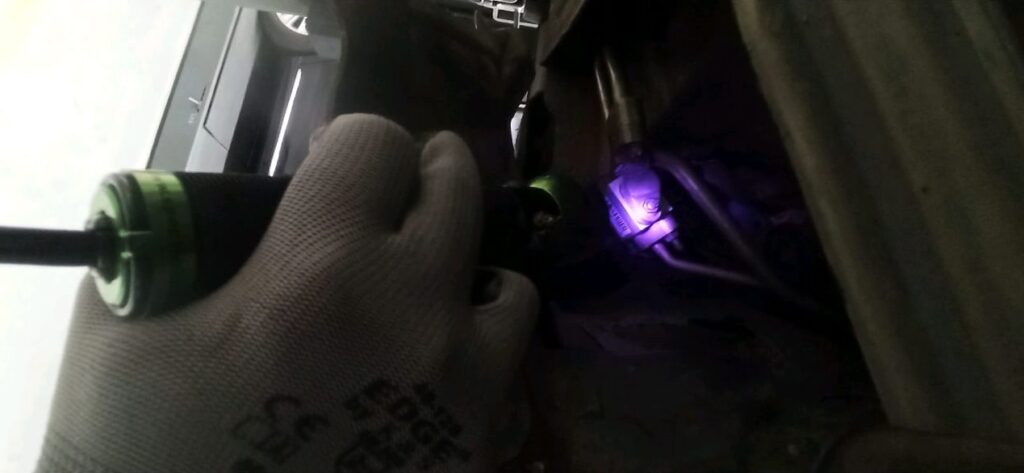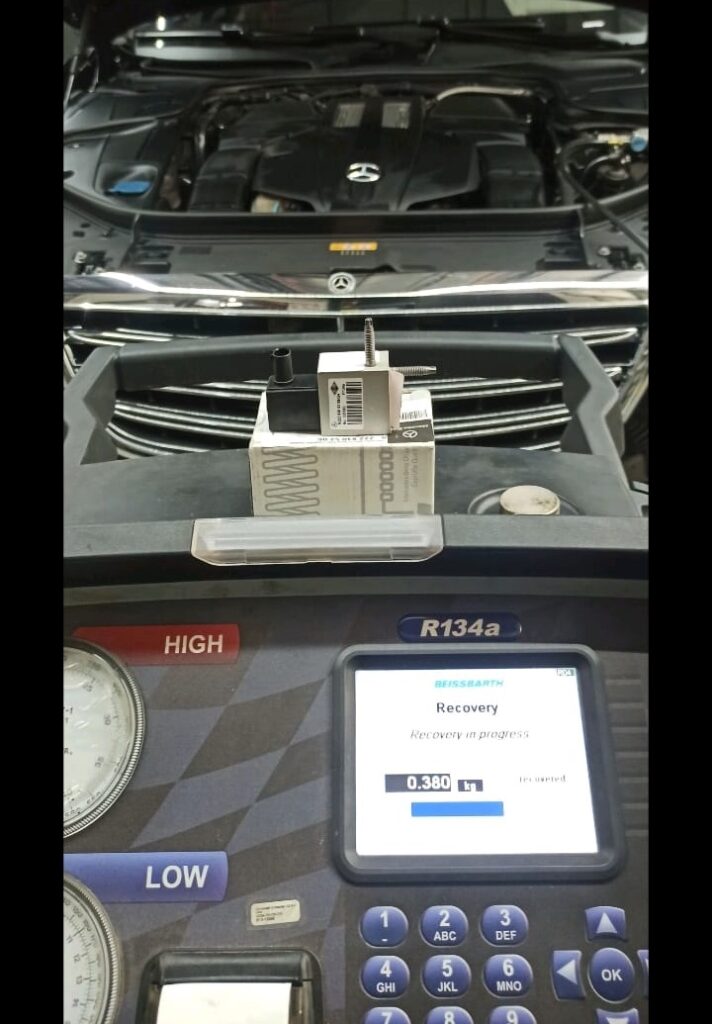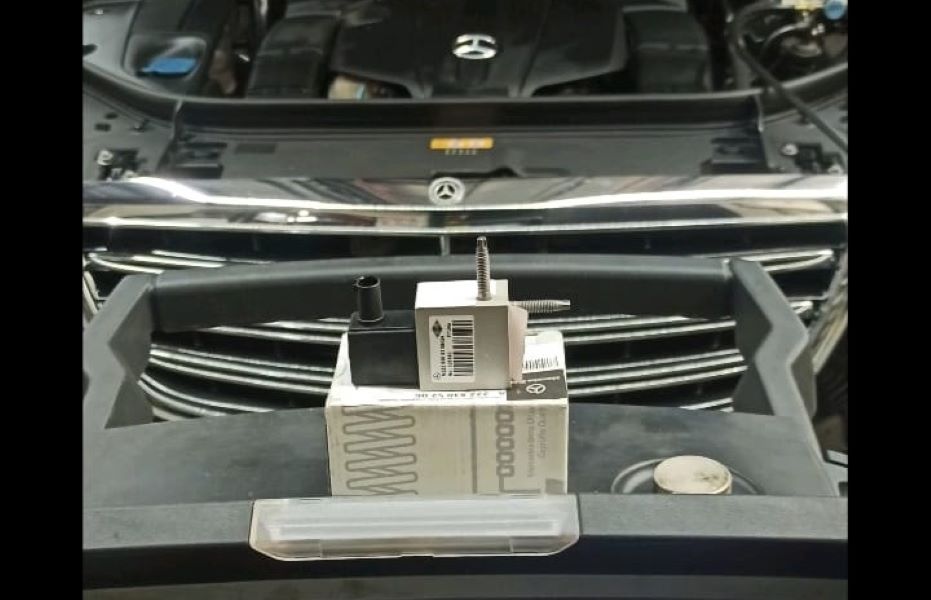Table of Contents
Mercedes AC Not Cold Enough: Diagnosing and Fixing the Issue in a Mercedes-Benz W222
When a driver reports that their Mercedes AC is not cold enough, it’s more than just a comfort concern it’s a sign of a deeper issue within the air conditioning system. Luxury vehicles like the Mercedes-Benz S Class W222 come equipped with advanced climate control systems designed to deliver precise cooling. When that system underperforms, it requires a structured diagnostic approach.
In this case study, we’ll walk through a real-world repair on a Mercedes S-Class W222 with the M276 Engine. We’ll cover the customer complaint, diagnostic process, fault identification, repair steps, and final validation, while also providing insights, tables, and FAQs to help you understand this common AC problem.
Vehicle Overview
- Model: Mercedes-Benz S-Class W222
- Engine: M276
- System: THERMOTRONIC automatic climate control with multi-zone regulation

Customer Complaint
The customer reported that the Mercedes AC was not cold enough, despite a recent service.
- – Symptom: AC would intermittently blow warm air, especially in hot weather or when idling in traffic.
- – Customer Expectation: Consistent, cold airflow in all driving conditions.
Step 1: Initial A/C Function Check and Visual Inspection
The diagnostic process began with a basic function check and visual inspection.
=> Visual inspection:
- – Checked compressor, condenser, and AC lines.
- – Looked for signs of oil or dye leaks around fittings.
=> Leak detection:
- – Used an electronic leak detector to identify refrigerant leaks.
- – No major leaks were detected, suggesting the issue was component-related rather than refrigerant loss.

Step 2: Short Test and Guided Fault Diagnosis
Next, a short diagnostic test was performed using Mercedes-Benz diagnostic tools.
=> Fault codes:
- – Irregularities found in the rear A/C shutoff valve.

=> Actuation test:
- – Verified if the valve responded correctly when activated electronically.
- – Showed abnormal readings.
=> Resistance measurement:
- – Valve resistance was outside manufacturer specification.
- – Confirmed that the rear A/C shutoff valve was faulty.

Step 3: Replacing the Rear A/C Shutoff Valve
The faulty shutoff valve was replaced with a genuine Mercedes-Benz part to ensure long-term reliability.
Repair process:
- 1. Gas recovery: Extracted refrigerant from the system.
- 2. Vacuuming: Removed air and moisture to prevent contamination.
- 3. Component replacement: Installed the new rear A/C shutoff valve.
- 4. Recharge: System recharged with the manufacturer-specified amount of refrigerant.
This process ensured the system was sealed, clean, and ready to operate efficiently.


Step 4: Test Drive and Leak Verification
After repairs, the vehicle underwent a test drive to confirm AC performance:
- – Performance monitoring: AC maintained consistent, cold airflow even under heavy load and idle conditions.
- – Leak check: Follow-up gas leak test confirmed the system was airtight.
Quick Reference Table – Mercedes AC Not Cold Enough (W222 Case Study)
| Step | Action Taken | Finding | Result |
|---|---|---|---|
| Initial inspection | Visual + leak check | No major refrigerant leaks | Issue deeper in system |
| Short test | Diagnostic scan | Fault in rear shutoff valve | Component suspected |
| Actuation + resistance | Tested valve operation | Out-of-spec readings | Valve confirmed faulty |
| Repair | Replaced shutoff valve, recharged system | Genuine Mercedes part | Restored cooling |
| Validation | Test drive + leak recheck | Stable cooling & no leaks | Problem solved |
Explore More Mercedes AC and Climate Control Issues
For a deeper dive into all AC-related issues, visit our hub page: Mercedes AC and Climate Control Problems – Complete Troubleshooting Guide. You’ll find grouped case studies, step-by-step diagnostics, and prevention tips.
Common Reasons Why Mercedes AC Is Not Cold Enough
| Cause | Explanation | Typical Symptom |
|---|---|---|
| Low refrigerant | Leak in condenser, evaporator, or hoses | Weak cooling, warm air |
| Faulty compressor | Can’t circulate refrigerant | No cooling at idle |
| Shutoff valve fault | Regulates refrigerant flow | Intermittent cooling failure |
| Blocked condenser | Debris prevents heat dissipation | Cooling loss in hot weather |
| Faulty sensors | Incorrect temp/pressure readings | AC cuts in and out |
| Blend flap actuator fault | Incorrect airflow mixing | Uneven or warm air in cabin |
Preventative Tips for Mercedes AC Systems
| Maintenance Task | Interval | Benefit |
|---|---|---|
| AC service (refrigerant check) | Every 2 years | Prevents undercharging/leaks |
| Cabin filter replacement | Every 12 months | Improves airflow and air quality |
| Run AC in winter | Weekly for 10 mins | Keeps seals lubricated |
| Condenser cleaning | As needed | Prevents overheating and efficiency loss |
| Professional diagnostics | When cooling weakens | Detects valve/sensor issues early |
FAQs – Mercedes AC Not Cold Enough
Q1. Why is my Mercedes AC not cold enough after a service?
This often points to a component fault (like a shutoff valve or compressor) rather than just refrigerant issues.
Q2. How do I know if my AC valve is faulty?
If cooling is inconsistent or stops when idling, diagnostics may show out-of-spec valve resistance.
Q3. Can low refrigerant cause Mercedes AC to be weak?
Yes. Refrigerant is critical for heat exchange. Low levels reduce cooling efficiency dramatically.
Q4. How much does it cost to repair a Mercedes AC not cold enough issue?
- – Refrigerant recharge: $200–$350
- – Shutoff valve replacement: $500–$900
- – Compressor replacement: $1,200–$1,800
Q5. Can I drive with weak AC performance?
Yes, but prolonged operation with faulty parts can stress the compressor and cause bigger failures later.
Conclusion
This Mercedes-Benz S-Class W222 case study highlights how a persistent “Mercedes AC not cold enough” complaint can stem from a faulty rear A/C shutoff valve.
Through a structured process visual inspection, diagnostic scanning, component testing, and replacement the problem was resolved, and the system restored to full cooling capacity.
For Mercedes owners, the key takeaway is simple:
- – Don’t assume AC weakness is always due to low refrigerant.
- – Faulty valves, sensors, or regulators can often be the real cause.
- – Always use OEM parts and professional diagnostics for lasting results.
By staying proactive with AC maintenance, you can avoid costly breakdowns and ensure your Mercedes continues to deliver the comfort it was designed for.
Author
Written by: Mercedes Expert
Automotive Technical Trainer & Mercedes-Benz Diagnostic Specialist
With years of hands-on experience repairing and diagnosing Mercedes-Benz vehicles, specializes in case-study-based troubleshooting guides that blend workshop accuracy with educational clarity.
Last Updated: September 2025
— Salim, Mercedes Expert
Independent specialist in Mercedes-Benz diagnostics, CAN Bus analysis, troubleshooting case studies, and EV systems.







Leave a Reply